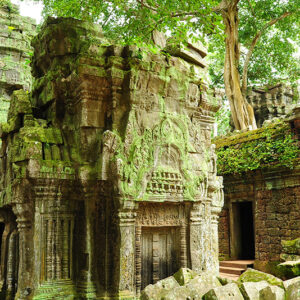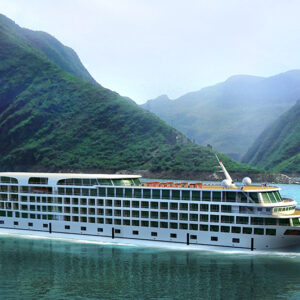Description
Day 1 Arrive Paro and drive to Thimphu
On arriving at the Paro International Airport, our representative will receive you and escort you to the hotel in Thimphu, the capital city of Bhutan. The drive takes you through the winding road with lots of beautiful hamlets. Later visit Tashichho Dzong.
Tashichho Dzong: Located on the northern edge of the city of Thimpu, on the western bank of the Wang chu Tashichho Dzong is Bhutan’s most stately and arguably the most impressive building. It has traditionally been the seat of the Druk desi or ‘Dharma Raja’, the head of Bhutan’s civil government, an office which has been combined with the kingship since the creation of the monarchy in 1907, and summer capital of the country. It houses the throne room of His Majesty the King of Bhutan and is the summer residence of the venerated monastic community. The current dzong is the impressive result of a redesign of the original medieval structure sanctioned by the Third King, His Majesty King Jigme Dorji Wangchuk, when he moved the capital to Thimpu from Punakha. The Fortress of the glorious religion houses the throne room of His Majesty the King, the main secretariat building and the central monk body. Its courtyard is open to visitors during the Thimphu Tshechu and when the monk moves to its winter residence in Punakha.
Overnight at Hotel in Thimphu
Category A Property: Druk Hotel Thimphu or similar
Category B Property: Le Meridien Thimphu
Category C Property: Taj Tashi Thimphu
Day 2 In Thimphu
Visit Memorial Chorten, Folk heritage museum, National library of Bhutan & Institute of traditional medicines.
The Memorial Chorten, also known as the Thimphu Chorten, is a large Tobetan-style Buddhist Monastery is a popular landmark in the city with its golden spires and bells. It was built in 1974 to honor the memory of the third king, Jigme Dorji Wangchuck. The architecture of the chorten has been designed to present it as ‘one of the most visible religious structures in Thimphu’.
The whitewashed chorten is decorated with richly carved annexes facing the cardinal directions, and features elaborate mandalas, statues and a shrine dedicated to the popular third king. There are numerous religious paintings and complex tantric statues housed inside reflecting both peaceful and wrathful aspects of Buddhist deities.This chorten is unlike other chortens as it does not enshrine the mortal remains of the King. Only the King’s photo in a ceremonial dress adorns a hall in the ground floor. The King when he was alive wanted to build ‘a chorten to represent the mind of the Buddha’.
A three storied traditional building houses the Folk Heritage Museum. The earthen and timber building was renovated and restored few years ago to appear as it was century ago. Established in 2001 in Thimphu, the museum provides glimpse into the traditional Bhutanese material culture and way of life. The artifacts, which are kept inside the house, remind the visitors about how the rural Bhutanese live today. This 19th century traditional house provides you a glimpse of the Bhutanese lifestyle, and artifacts from the rural households. One can come across typical household objects, tools and equipment.
Besides, the museum also organizes demonstrations of rural traditions, skills, habits and customs and educational programs for children. The activities of the museum follow a seasonal rhythm, just like the activities of a true rural household, offering you something new to see, every time you visit it. The rural setting and flavor has been well-preserved and you can see paddy, wheat and millet fields here, a traditional water-mill with mill stones more than 150 years old, traditional style kitchen gardens with vegetables that were grown over the past 100 years and the famous traditional hot stone bath. Native trees and plants that had domestic uses in Bhutanese rural household are being grown here in an effort to keep indigenous knowledge about the use of natural resources alive and have a patch of greenery, right in the heart of the capital city of Thimphu.
The National Library of Bhutan was first established in 1967 under the patronage of HM Queen Ashi Phuntso Choden (1911–2003), with a small collection of precious texts. The library was initially housed within the central tower (utse) of Tashichodzong. Later, due to its growing collection, it had to move to a building in the Changgangkha area of Thimphu.
To provide a permanent home for the sacred religious books and manuscripts in the growing collection, construction of the present four-storeyed eight-cornered traditional building, which looks like the central tower temple of a Bhutanese Dzong, in the Kawajangtsa area of Thimphu was initiated. The cost of the construction of this building was borne entirely by the Royal Government of Bhutan without any foreign aid. It was inaugurated on November 23, 1984.
The National Archives is responsible for collecting and preserving important past, present and future documents on Bhutan for future generations. The library also holds a representative collection of English and western language books mainly related to the Himalayas, Bhutan and Buddhism.
The National Institute of Traditional Medicine was established in 1988 with the concept to merge the allopathic and traditional systems of healing. It contains an impressive, large laboratory and production facilities that ensures quality of the products, the components of which includes plants, minerals, animal parts, precious metals and gems. The Institution produces traditional Bhutanese medicine towards the needs of the public. There is a day-care facility and clinic where doctors diagnose patients and prescribe appropriate medicines or treatments. The institute also researches the use of herbs and plants and has a plot on the premises. A small museum and a gift shop (where the famous herbal tea -Tsheringma- is produced) is also present in its compounds. There is also a training school for traditional medicine practitioners. After the closing of the Institute the visitors can walk along the compound to view it from the outside.
Day 03: Thimphu to Punakha
Distance: 77 kms/ 48 miles
Drive Time: 03 hours approx
Visit Dochula Pass, Chimi Lhakang & Punakha Dzong
Dochula pass, located 30 km away from the capital, on the way to Punakha from Thimphu offers a 360-degree of beautiful panoramic view of Himalaya mountain range, especially on clear winter days. The 108 chortens that adorn the beauty of this place were built by Queen Mother to commemorate the Bhutanese soldiers who were killed when fighting the Indian rebels in 2003. The pass is also popular spiritual place for both locals and tourists because of an important temple that is located on the crest of Dochula pass. Besides the spirituality of the place many Bhutanese families visit the pass during holidays and weekends to simply enjoy the scenery of the place with their pack lunch and hot tea. For tourists, the place is an ideal location to capture beautiful pictures of Himalaya mountain range provided the weather permits.
Chimi Lhakhang located near Lobesa, Punakha stands on a round hillock and is flanked by hundreds of prayer flags. Built in 1499, this monastery is dedicated to Lama Drukpa Kinley or ‘the Divine Madman’. An accomplished master of Mahamudra Buddhist Tradition, he is also known as the ‘Mad Saint’ for his unorthodox ways of teaching Buddhism by singing, humor and outrageous behavior, which amounted to being bizarre and strong sexual overtones and inclinations.
Drukpa Kinley is also a cultural icon in Bhutan around whom countless yarns, fictions, stories and legends have been spun. In founding the site it is said that Lama Kunley subdued a demon of Dochu La with his “magic thunderbolt of wisdom” and trapped it in a rock at the location close to where the chorten now stands. He is also the saint who advocated the use of phallus symbols as paintings on walls and as flying carved wooden phalluses on house tops at four corners of the eves. The monastery is the repository of the original wooden symbol of phallus that Kunley brought from Tibet. This wooden phallus is decorated with a silver handle and is used to bless people who visit the monastery on pilgrimage, particularly women seeking blessings to beget children. The tradition at the monastery is to strike pilgrims on the head with a 10 inch (25 cm) wooden phallus (erect penis). Traditionally symbols of an erect penis in Bhutan have been intended to drive away the evil eye and malicious gossip.
Punakha Dzong: The Punakha Dzong, also known as Pungtang Dechen Photrang Dzong (meaning ‘the palace of great happiness or bliss’) is the administrative centre of Punakha dzongkhag in Punakha, Bhutan. Constructed by Zhabdrung (Shabdrung) Ngawang Namgyal on the 8th day and 8th month of the Fire ox year in 1673, it is the second oldest and second largest dzong in Bhutan and one of its most majestic structures. Punakha Dzong was the administrative centre and the seat of the Government of Bhutan until 1955, when the capital was moved to Thimphu.
It is a six-storied structure with a central tower or Utse at an average elevation of 1,200 metres (3,900 ft) with a scenic, mountainous background. The materials used in building the Dzong consisted of compacted earth, stones and timber in doors and windows. The Dzong was constructed as ‘an embodiment of Buddhist values’. The first King of modern Bhutan was crowned in Punakha Dzong. Punakha Dzong remained the centre of government until it was relocated to Thimphu. In 2011, the wedding of the 5th King was held in this fortress.
Overnight at Hotel in Punakha
Category A Property: Dhensa Boutique Punakha or similar
Category B Property: Uma Punakha
Category C Property: COMO Hotel Punakha
Day 04: In Punakha
After breakfast we will drive 12 km north of Punakha and hike to Khamsum Yulley Namgyal Chorten, a fine example of Bhutanese architecture and artistic traditions. An hour hike to the Chorten, through a moderately inclined trail surrounded by pine trees, this site offers beautiful view of the Punakha Valley. The Chorten built to remove negative forces and promote peace, stability and harmony in the changing world dominates the upper Punakha Valley with commanding views across the Mo Chhu and up towards the mountainous peaks of Gasa and beyond.
A fine example of Bhutanese architecture and artistic traditions, the Khamsum Yulley Namgyal Chorten stands out on a beautiful ridge above the Punakha valley. This 4-storey temple was built by Her Majesty the Queen Mother, AshiTsheringYangdonWangchuck as per the Holy Scriptures and took 9 years to complete it. This temple has been dedicated for the well being of the kingdom, its people and all sentient beings.
Day 05: Punakha – Wangduephodrang – Gangtey (Phobjikha)
After breakfast drive to Gangtey via Wangduephodrang, where we will stop to visit the remarkable Wangduephodrang Dzong, stretched along a spur at the confluence of two rivers. We will also visit a local village house, to gain insight into the lifestyle of the people. Then drive up a winding mountain road through oak and rhododendron forest, and over a high pass down into the Phobjikha valley. In the evening, take a stroll around Gangtey village and visit Gangtey Gompa, the only Nyingmapa monastery in the kingdom.
Stay at a Bhutanese Farm House – unique experiences | Deki Gatseling or Phub Gyeltshen’s Farm House |
Deki Gatseling is a traditional Bhutanese style Farm House located at Phobjikha in Wangduephodrang dzongkhag. There are 3 guest rooms with electricity, hot water, housekeeping, hot stone bath and bathroom (exterior).
Phub Gyeltshen’s Farm House is a two storied traditionally built Bhutanese house. There are 3 guest rooms with electricity, hot water, housekeeping, and interior bathroom.
When staying at the Farm House, you will enjoy the beautiful view of the Phobjikha Valley and have meals with the host family. The farm House provides guide service to its guest, with them, you can visit the farm and the village, also enjoy playing the Bhutanese local games like Khuru and archery or bird watching for black necked cranes.
Day 06: Gangtey (Phobjikha)
After an early breakfast, explore Phobjikha valley, chosen winter home of black-necked cranes, migrating from the Tibetan Plateau. Visit the Crane center Black Necked Crane Information Centre. Situated on the edge of the forest and wetland along the main road of Phobjikha valley, the black-necked crane information Centre has an observation room equipped with high power telescope and spotting scopes for catching the best view of the cranes. The centre also offers display information that outline the natural and cultural history of the area.
Rest of the day, you can choose to rest or opt for day hikes.
Day 07: Gangtey (Phobjikha) – Paro
Proceed to Paro.
After freshen up visit Paro Dzong is one of the most impressive and well-known dzongs in Bhutan. One of the finest examples of Bhutanese architecture, it is also known as the Ringpung Dzong, which means ‘fortress on a heap of jewels’. It is the administrative seat of the district of Paro. The dzong was built in the 16th century on the foundation of a monastery built by Guru Rinpoche. Unlike most of the other dzongs in Bhutan, it survived the massive 1897 earthquake mostly unscathed, though it was almost burnt to the ground by a fire in 1907. All-important relics were lost to the fire and nothing could be salvaged except for the Thongdrol, a 20×20 meter-wide Thangka. The Thangka is displayed annually during a ceremony called Paro Tshechu. The Dzong was however rebuilt the following year.
The National Museum of Bhutan is housed inside the revamped circular Ta-dzong building, an ancient watchtower above the Paro Dzong. This unusual round building is said to be in the shape of a conch shell. The original building was constructed in 1656 but the building was converted into a museum in 1968. The necessary infrastructure was created to house some of the finest specimens of Bhutanese art, including masterpieces of bronze statues and paintings gathered from different parts of the country. Suitable galleries were constructed to house the extensive collections. Works of art were elegantly displayed on scientific lines.
Some of the handicrafts items cover the history and cultural heritage of more than 1500 years. The National Museum has in its possession over 3,000 works of Bhutanese art, rich holdings of various creative traditions and disciplines that represent a remarkable blend of the past with the present and is a major attraction for local and foreign visitors.
Overnight at Hotel in Paro
Category A Property: Naksel Resort Paro or similar
Category B Property: Zhiwaling Resort in Paro
Category C Property: COMO Hotel Paro
Day 08: Paro [B]
Haa valley excursion
Haa Valley which is often known as “Hidden-Land Rice Valley” is one of the most picturesque places in Bhutan. According to the legend, the Haa valley, before the 8th century, was wrapped up in animist tradition. Some elements of this belief system still exist in form of festivals and rituals. The tantric master Padmasambhava visited the valley in the 8th century and transformed some blood sacrificing animist beliefs into peaceful Buddhist traditions. Ap Chundu and several other deities, once hostile animist forces, were subdued and made the guardians of the land.
Day 09: Paro [B]
Hike to Taktsang Monastery then visit Kyichu Lhakang.
Perched on the side of a vertical cliff at 3000 m altitude north of Paro, this monastery creates an impressive sight, and is the unofficial symbol of Bhutan. It is one of the most famous Buddhist Monasteries in Bhutan and is also referred to as the ‘Tiger’s Nest’. Legend has it that Guru Rinpoche (Guru Padmasambhava) flew to this location from Khenpajong, Tibet on the back of a tigress and subdued a demon. He then meditated in a cave here for three months and emerged in eight incarnated forms (manifestations) and blessed the place. Guru Padmasambhava is known for introducing Buddhism to Bhutan. Today, Paro Taktsang is the best known of the thirteen caves in which he meditated.
The first monastery was constructed 1694, but in 1998 a tragic fire destroyed most of the original buildings – which have since been painstakingly restored to their former glory. Taktsang Monastery is a pilgrimage site for both tourists and locals, it is a journey filled with spiritual bliss. Keeping the spiritual side aside, the journey up to Taktsang Monastery is a Hiker’s delight. An hour hike up to a small wooden teahouse called Cafeteria provides close view of the monastery. A further and a rather challenging hike lead you to the glorious Taktsang Monastery.
Located close to the Paro Airport, the Kyichu Lhakhang is an important Himalayan Buddhist Temple. It is one of Bhutan’s oldest religious sites built in the seventh century. This temple is one of 108 built by Tibetan emperor Songtsen Gampo to subdue a demoness who prevented the spread of Buddhism. Temples were built across the Himalayas to pin her body down. Kyichu Lhakhang pins down her left foot and Jamba Lhakhang in Bumthang her left knee.
Guru Rimpoche visited this temple in the eight century and concealed many spiritual treasures here. Pilgrims turn the many prayer wheels along the walls as they circumambulate the temple. The fine statues of the Bodhisattvas and the Buddha are national treasures. The wooden floor of the sanctum is inlaid with turquoise and coral gemstones offered by pilgrims.
Day 10: Paro [B]
Today you will be transferred to the airport for your onward journey.
Based on Category A
- For 3 – 5 passengers: $2650
- For 2 passengers: $2995
- Single supplement: $1195
Based on Category B
- For 3 – 5 passengers: $4575
- For 2 passengers: $4925
- Single supplement: $2215
Based on Category C
- For 3 – 5 passengers: $5650
- For 2 passengers: $5925
- Single supplement: $2795




















Reviews
There are no reviews yet.